I fell under the spell of Edward Gorey’s whimsical, often eerie, always eye-catching artwork long before I knew who he was.
It all started waaaay back in the 1970s with this drawing from a book called A House With a Clock in its Walls by John Bellairs:
A House With a Clock in its Walls features several shiver-inducing Gorey illustrations but this one really got under my 7-or-8-year-old skin. The good guys—our hero, the recently orphaned Lewis Barnavelt; his uncle, a kindly warlock; and the next door neighbor, a nutty, Mrs. Weasley-like witch named Florence who is also (IMHO) the uncle’s best friend with benefits—are being chased by an evil witch, Selena Izard. Guided by its headlights that look just like Selena’s spooky spectacles, her car has been in hot pursuit all evening and is now bearing down on our hapless trio.
Also, the fate of the world hangs in the balance.
The tension in this drawing is palpable. To this day, I want to yell at Uncle Jonathan to put the pedal to the metal, for heaven’s—and the continued existence of life as we know it’s—sake.
If you’ve ever watched PBS’ Mystery!, you’ve seen Edward Gorey’s work. Since the show launched in 1980, its opening sequence has been comprised of mostly black and white, animated Edward Gorey drawings. A few of my faves:
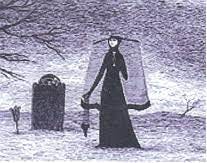
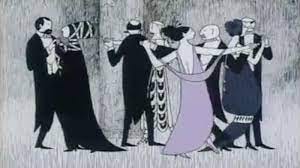
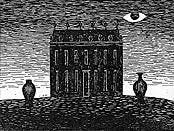
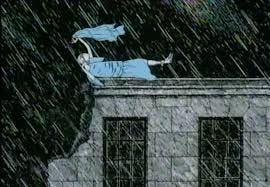
This world of hawk-nosed, Edwardian-era-ish people dancing and dying and strolling veiled through graveyards and crying for help from rooftops in places where eyeballs replace moons and maids dust gravestones made perfect sense to my oh, so miserable teenaged self. Actually, it makes perfect sense to my oh, so not-miserable middle-aged self as well. Part of Gorey’s brilliance lies in his ability to capture inner turmoil, fear, fascination with the unknown, and other emotions through the arresting way he depicts the exterior world.
Sometime after I started watching Mystery!, I encountered Gorey’s The Gashlycrumb Tinies, or After the Outing, a twisted, non-politically correct, and hilarious alphabet book about various ways that children meet their deaths. Basil, for example, was assaulted by bears, Fanny was sucked dry by a leech, and poor Neville died of ennui. I laughed my ass off, and have remained foreverafter a fan of Edward Gorey.
Imagine how excited I was when 1. I finally made it to The Edward Gorey House in Yarmouth Port, MA (i.e., “on Cape Cod”) a couple of weeks ago, and 2. upon entering the house museum, I plucked this off the closed-lidded toilet that has been repurposed as a coffee table:
What fun! Only I soon became too busy darting from room to room, spotting first a baby doll splayed out on a staircase like unfortunate Gashlycrumb Amy (“A is for Amy, who fell down the stairs”), then a funny drawing, then a creepy one, then some truly gory memorabilia—mummified hand, anyone?—to focus on a scavenger hunt.
Focusing on the museum director’s Goreyesque talk (random, rambling, funny, and thoroughly enjoyable—could he be Edward Gorey re-incarnated?) was not, however, a problem. Among other factoids, I learned that:
Gorey considered George Balanchine to be “the greatest living genius in the arts,” to the extent that he attended nearly every New York City Ballet ballet performance—more than 5,000—for nearly 30 years. Sweet Jesus, I would be as dead as Neville from ennui if I had to watch even 99% of those.
Gorey despised Henry James, despite—or perhaps because of—illustrating several of James’ novels while working as a book cover designer at Anchor Books. It’s hard to imagine the quirky Gorey enjoying the stuffed shirt Henry James’ writing; however, the fact that Gorey mentioned this aversion in practically every interview he gave is a bit much. Although being “a bit much” was one of Gorey’s distinguishing traits.
Gorey purchased what he referred to as his “Elephant House” in Yarmouth Port without first taking a look inside. Turns out, the place was infested with non-domestic animals. He allowed raccoons to live in the attic for a few years, then finally cleared them out, perhaps because his numerous beloved cats didn’t appreciate their upstairs neighbors.

I was pleased to note that, whenever I glanced over at my daughter during this discourse, she was chortling and chuckling as much as I was. Lucia is both a fashion business major and the only remotely stylish person in our household, so I’d anticipated that she would enjoy both Gorey’s unique fashion sense and the museum’s current exhibit called Dressed to Kill: Edward Gorey and the Social Fabric. I positively gleamed with pride that my own little tiny also appreciated Gorey’s twisted sense of humor.
En route to see Gorey’s house, Lucia had told me that she didn’t know anything about Edward Gorey, his artwork, or his writing. After the answer she gave me regarding who Harriet Beecher Stowe was (see my recent post titled “Harriet Beecher Stowe, Racist?”), her Edward Gorey tabula rasa came as quite a relief.
Following our delightfully Gorey adventure, Lucia and I enjoyed a tasty and not at all cross lunch at Grumpys right down the road.
Hmm. “The Grumpy Lunch Counter.” “A Fussy Sandwich.” Feels like there’s an Edward Gorey—or, since he died in 2000, an Edward Gorey heir apparent—book in there somewhere.
Anyone?

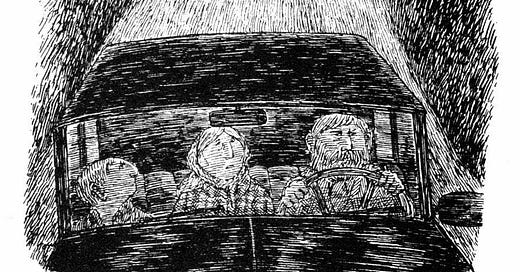



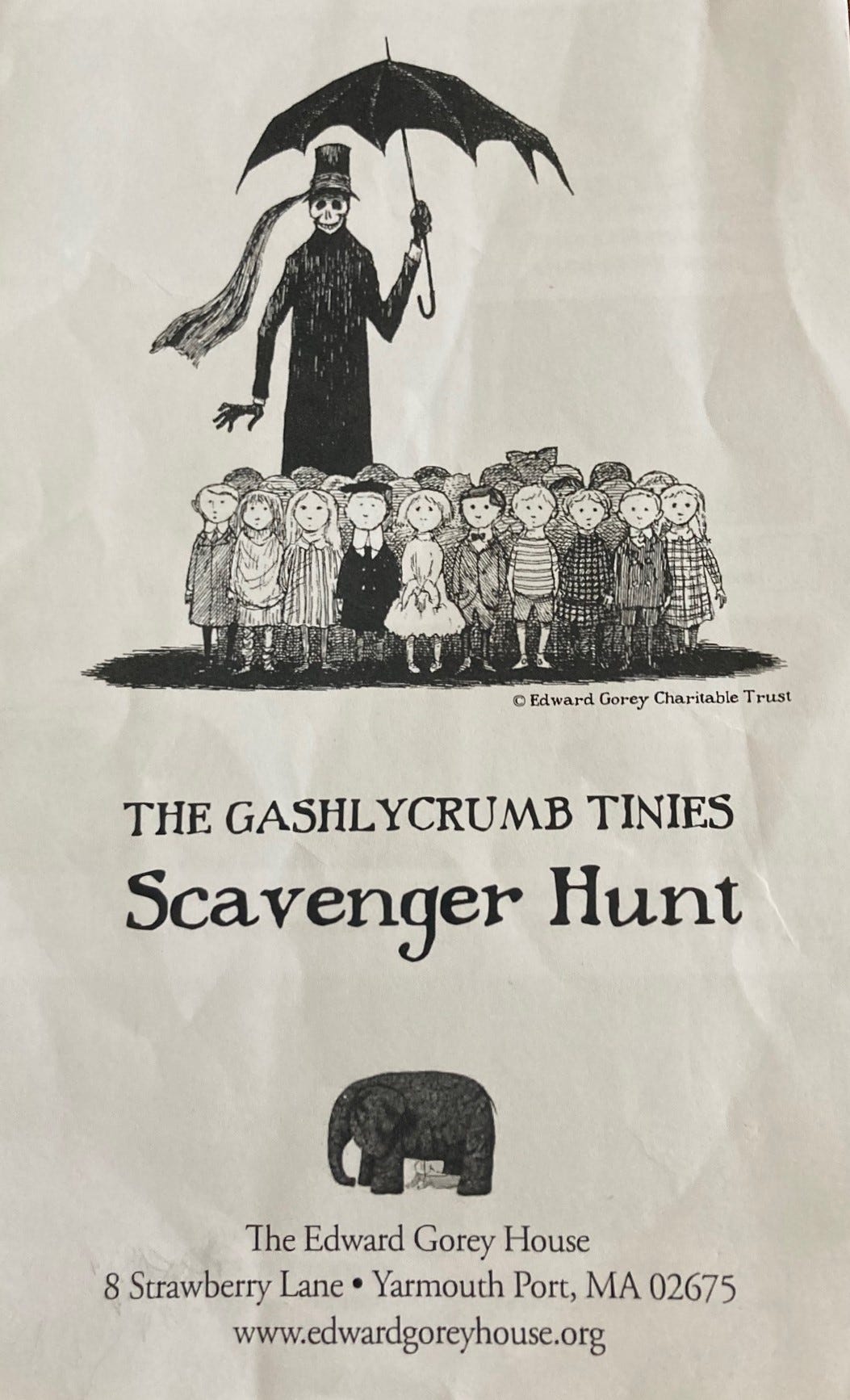
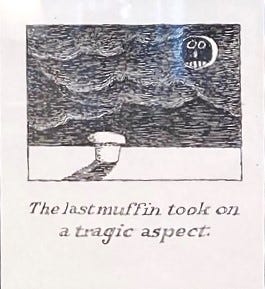
I love learning about all these local, historic gems from your posts!
Fascinating! And now I know who illustrated that Mystery! Intro!